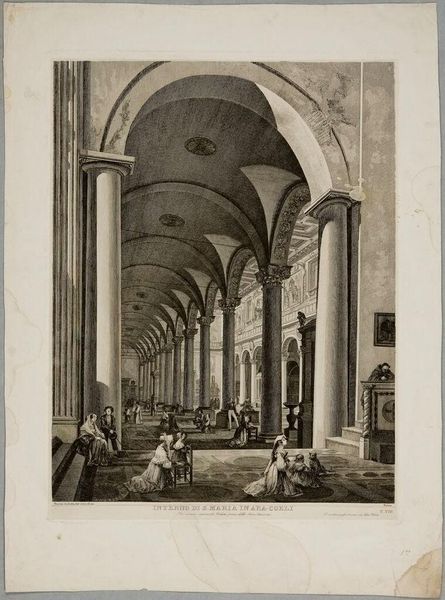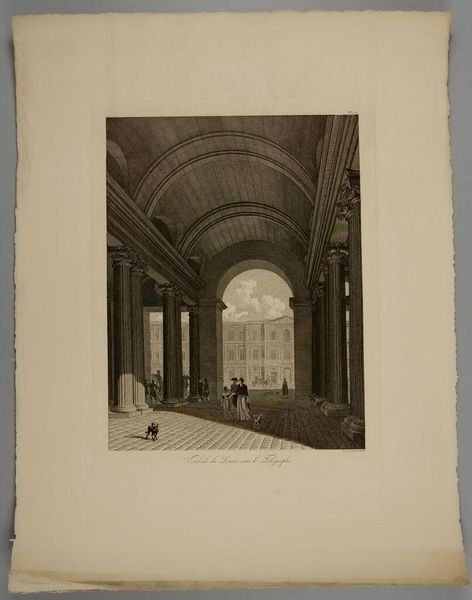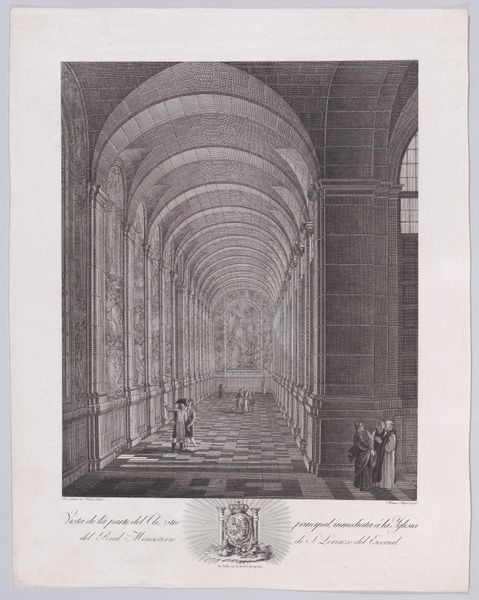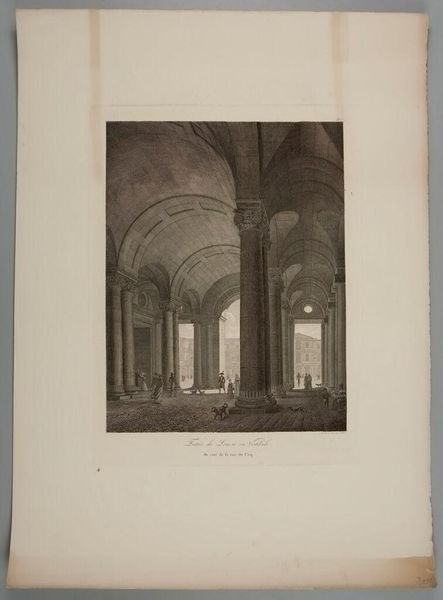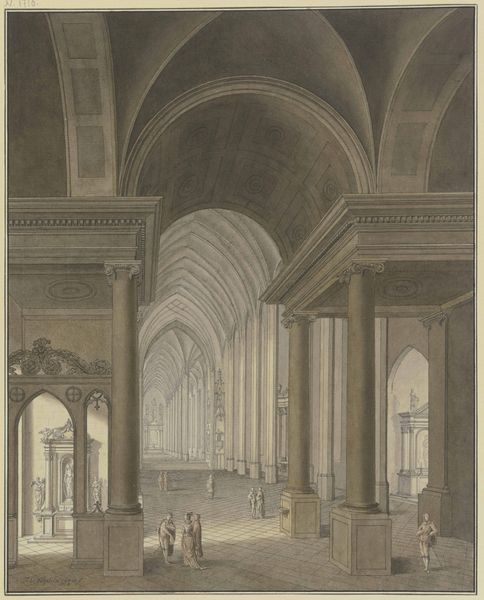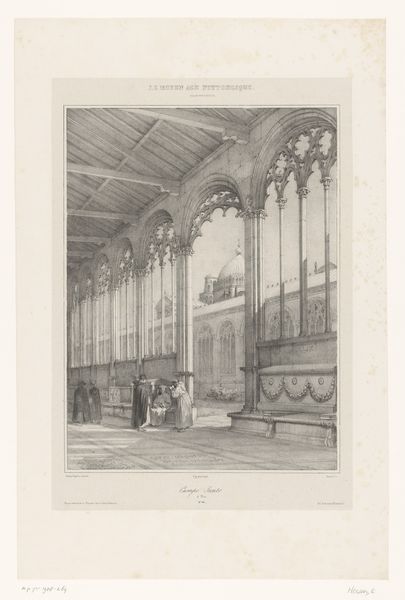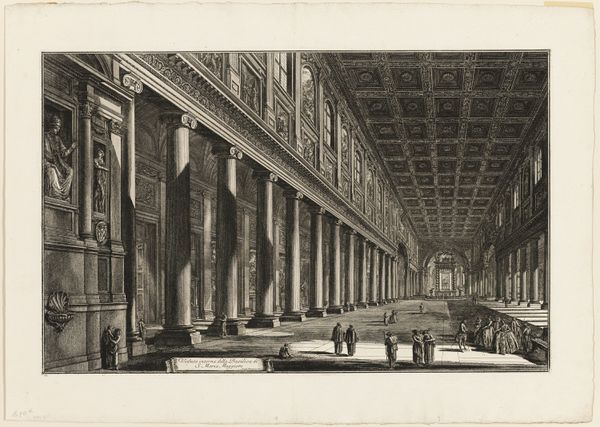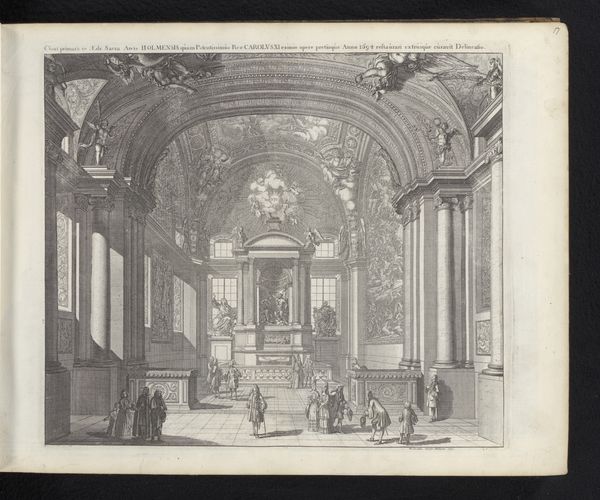
Copyright: CC0 1.0
Curator: At first glance, this piece feels like a stage set, a meticulously crafted scene for some grand opera. Editor: Indeed. What strikes me is how Rossini, born in 1790, captures not just the architecture in "Interior of S. Maria Maggiore," but also the social dynamics within such a sacred space. You can almost hear whispers echoing. Curator: Look at the sheer repetition of form – the columns, the arches – it speaks volumes about industrial-era printmaking and the desire to disseminate images of grandeur to a wider audience. Editor: But dissemination for whom? The figures within—are they observers, participants, or merely props in this architectural drama? It’s impossible to ignore how class and religious power structure visibility here. Curator: A fair point. Ultimately, the etching process itself democratizes this spectacle, making it accessible beyond the elite circles who would typically experience it firsthand. Editor: And perhaps in that accessibility lies a subversive potential, inviting critical engagement with the very institutions these grand spaces represent. Food for thought.
Comments
No comments
Be the first to comment and join the conversation on the ultimate creative platform.

